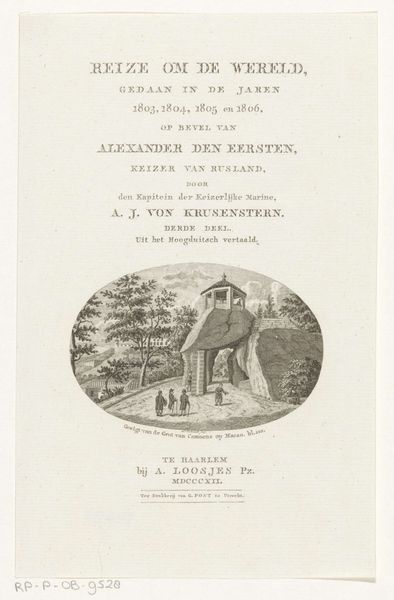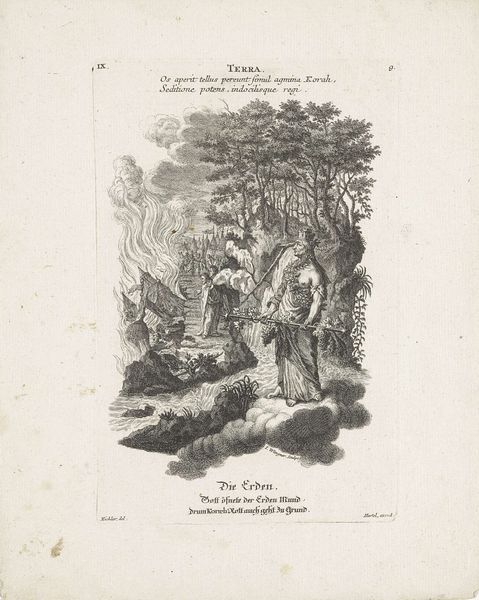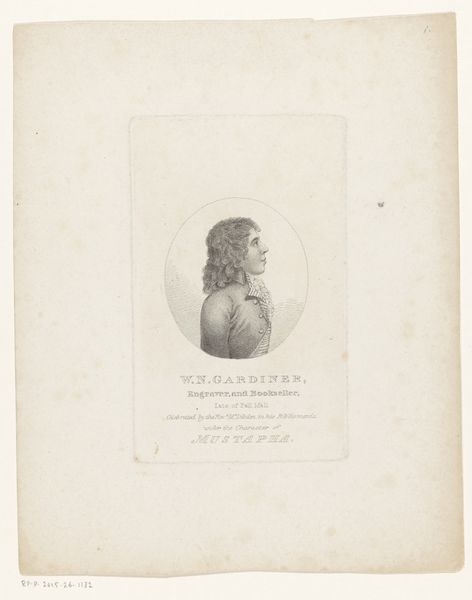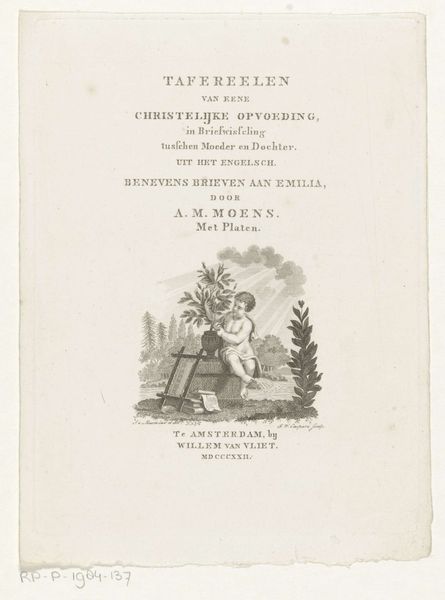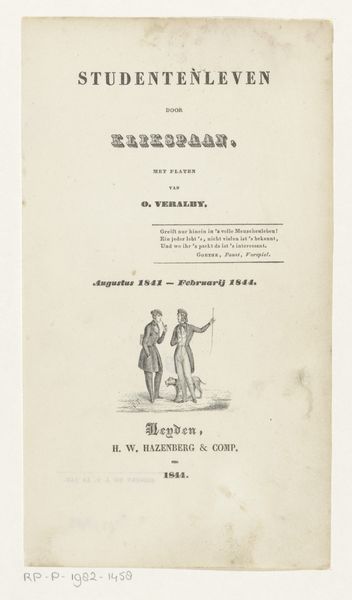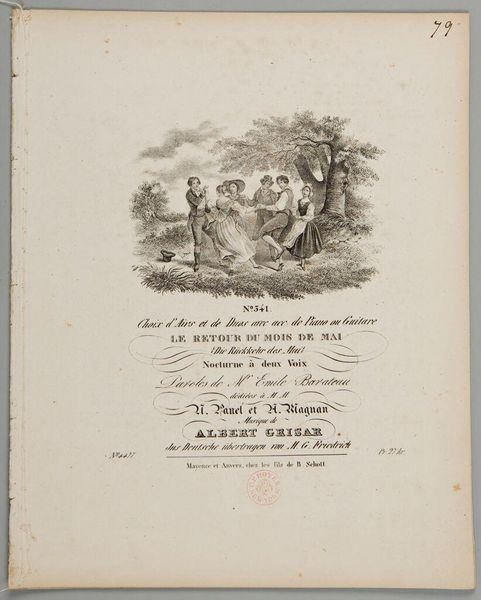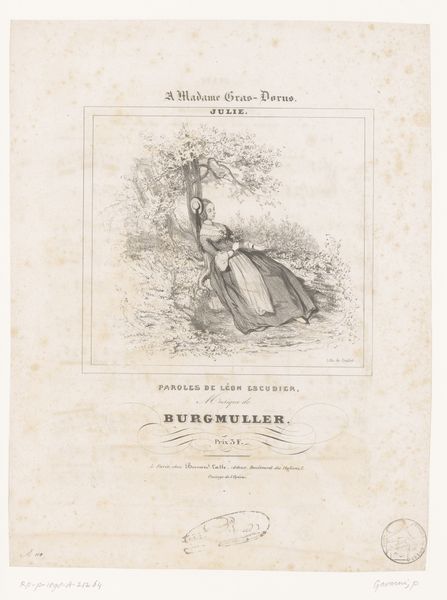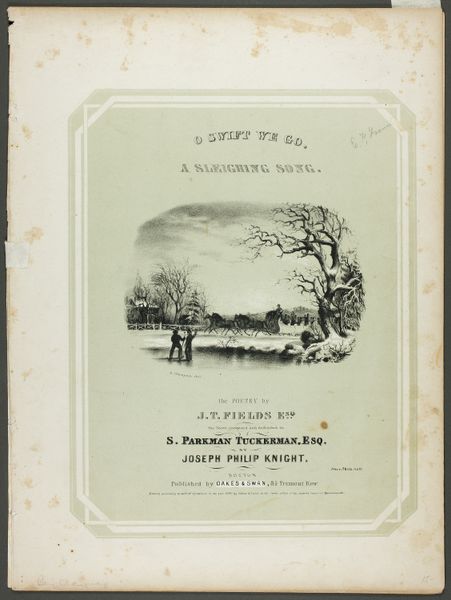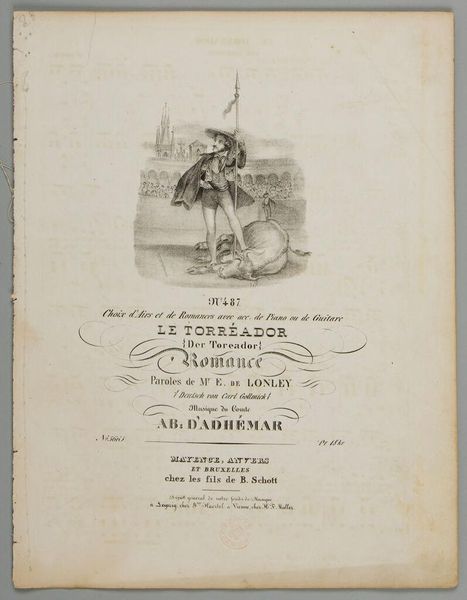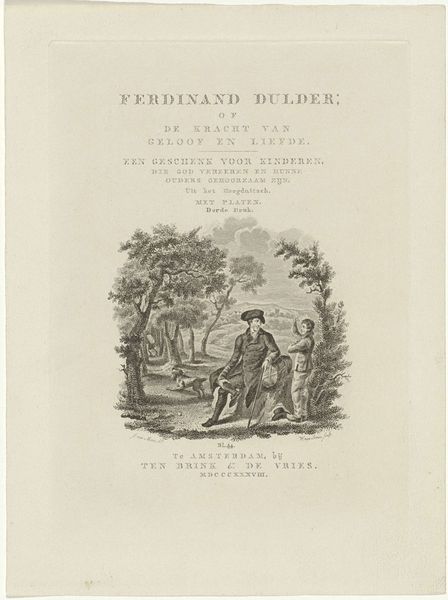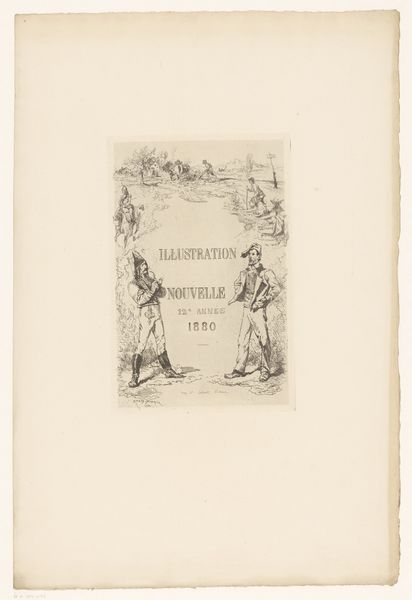
graphic-art, print, engraving
#
graphic-art
# print
#
engraving
Dimensions: height 226 mm, width 143 mm
Copyright: Rijks Museum: Open Domain
Curator: This is "Maria met kind en lam," or "Mary with Child and Lamb," an engraving created in 1834 by Abraham Veelwaard. It's a striking example of early 19th-century graphic art. Editor: It feels strangely serene, yet intensely formal. The greyscale lends an archaic, almost solemn atmosphere. What exactly is it doing within its original social context? Curator: It appears to be the frontispiece from a book called "Christelijke Avond-Overdenkingen Voor Alle Dagen Des Jaars," or Christian Evening Meditations for Every Day of the Year by C.W. Spieker. Published in Haarlem, which you see cited at the bottom, the text’s reference “Naar het Hoogduitsch” may point toward translation from German devotional literature, influencing the book's readership and use. Editor: Note how the figures, presumably Mary and a child Jesus, dominate the small foreground stage, a deliberate compositional decision. Observe the sunburst motif emerging from the background. Its radial lines punctuate an otherwise tranquil, nearly bucolic, setting, emphasizing a moment of grace. The lamb adds a common layer of religious symbolism and innocence. Curator: The engraving itself speaks to the broader availability of printed images. Religious imagery, particularly, could then reach a wider audience via mass production; how were they consumed, or adapted within a household religious practices, what was Veelwaard paid, and were those fair labor practices? These engravings would often circulate through printed religious texts, demonstrating how image production became democratized as faith took shape. Editor: Consider the use of line, tone, and density to sculpt form, which together direct our reading of this complex religious imagery. Here, the sharp contrasts and clear contours seem to solidify the scene in symbolic visual clarity. It has all the visual elements needed for proper understanding and dissemination of particular theology at the time. Curator: Certainly, but it's also important to view how the production and availability of art influenced contemporary notions of piety, domestic life, and religious education in the early 19th century. What this visual language *meant* can thus not be easily decoded without its cultural and economic understanding. Editor: Fascinating how a work produced as "commercial art" could invoke such aesthetic considerations and still incite debate concerning value beyond formal design. Curator: Precisely. To see how techniques of reproduction allow greater viewership invites discussions about the place of such imagery inside of larger cultural norms and conditions.
Comments
No comments
Be the first to comment and join the conversation on the ultimate creative platform.

